I’ve been sociable this week. I got together with Julian Lopez-Morillas, a Bay-area actor whom I knew from Swarthmore College. Julian is presently appearing in a supporting role in Ibsen’s The Master Builder at the Aurora Theater in Berkeley, located next to the Berkeley Rep. He’ll also be Prospero in The Tempest this summer, a good role for a guy our age.
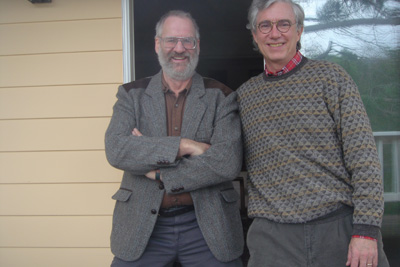
And the next day I had lunch with the King of the Hackers, Bill Gosper.
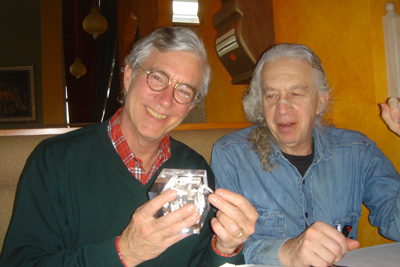
I always think it's kind of amazing that I get to be friends with a guy who was really one of the very first programmers. It's as if I'd become a pilot at age forty (when I moved to Silicon Valley in 1986) and then ended up knowing Wilbur Wright. The computer thing has happened over such a short period of years. Actually Gosper’s only two years older than me, although he’s such a timeless monument, I tend to think of him as more my senior than that. Although in fact he's very youthful.
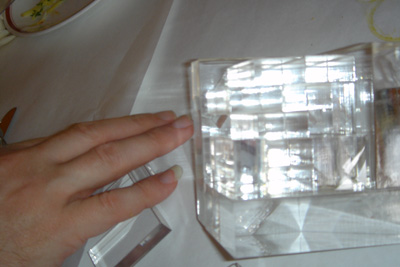
When I first moved to Silicon Valley, I was very eager to get to know Gosper, but was shy to call him. Come to think of it, I think the first time I got the nerve to call him, I was high on some weird concoction I’d gotten from the Mondo 2000 crew, and was under the impression we were coversing telepathically. He didn’t mind all that much; for a hacker, an impaired person is simply a different computational mode. In any case, I went to visit him at Symbolics in 1987, where he then worked, and he showed me some amazing Game of Life simulations that were based on a weird speed-up algorithm of his called “HashLife”. I remember him sharing the source code for the trick, but for me, this was strictly a case of the Mathematician Godfather: He makes you an offer you can’t understand.
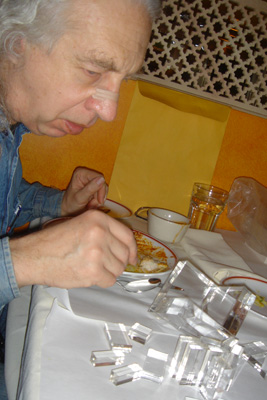
Yesterday, as always these days, I met Bill at a subcontinental Peninsula restaurant. He brought a bag of puzzles of his own inventions. This one here is an assemble-it-yourself-cube he made. Gosper has long fingernails and he’s taken to wearing a nose-opening tape — I didn’t ask why. More interesting things to talk about!
Bill also brought along his friend Peter Aiken-Forderer, shown here with Gosper’s “Twubblesome Twelve” puzzle.
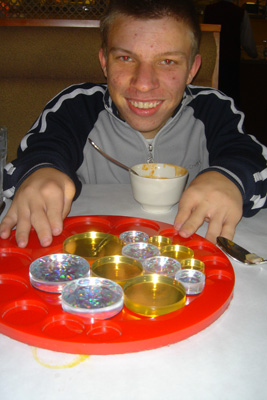
And then we got down to the cellular automaton simulation known as the Game of Life, or simply as Life. Gosper is best-known for discovering the Life Glider Gun, back in the heroic days of computation in the early 1960s.
But now some young guys have included the HashLife hack in Golly, which is an open source, cross-platform Game of Life simulator currently under development by Andrew Trevorrow and Tomas Rokicki. It features an unbounded universe and uses Bill Gosper’s “hashing” technique to speed up the simulations. You can download it for free at Source Forge.
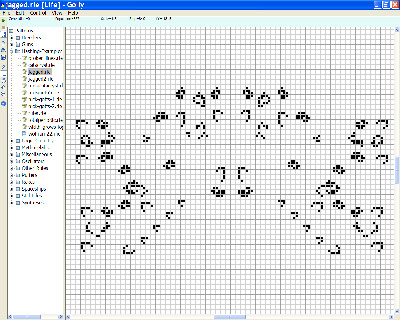
Above is a starting pattern for a rule called Jagged. Those little patterns in diagonals down near the bottom middle are called gldiers. This pattern will shoot out three big “spaceships” leaving exhaust, one spaceship moving to the right, one moving left, one moving up..
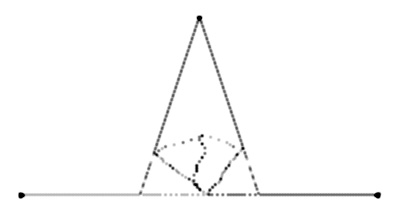
Above is the same Jagged rule, about five thousand update steps later, with the spaceships those heavy dots at left, top, and right, chugging away. The debris is doing some weird stuff on its own. The cool, gnarly thing to notice here is the waviness of those lines in the middle. The more-or-less vertical line is made of stable blocks of four marked cells each, and the more diagonal lines are made up of flotillas of moving Life gliders.
By the way, the dots you see in this zoomed out views of Golly Life worlds are no longer individual marked cells; when we zoom out like this, Golly simply marks as black any region that includes any marked cells at all.
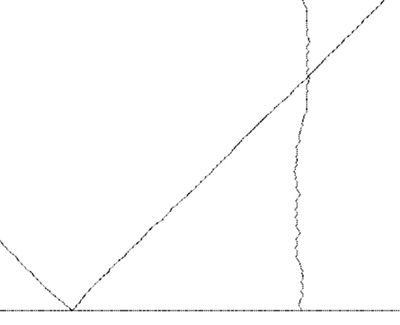
Here’s the Jagged rule after a hundred million update steps. By now the world includes fifty million marked cells. In the picture above, I’ve zoomed in on the spot in the middle of the lower line where it looks like three lines come out from a common point. Actually, the vertical “line” of blocks wanders back and forth to the left and right of the slanting glider streams. This is a universal class four computation par excellence.
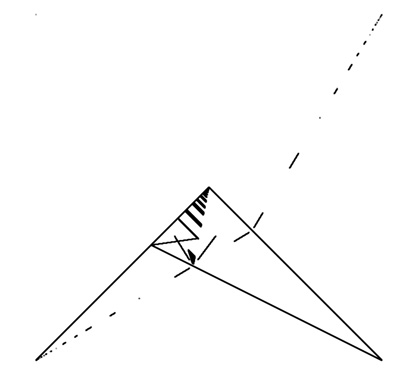
Thanks to the HashLife hack, Golly can reach astoundingly far into the future. The picture above started out as 52 marked cells. And then I ran it through some trillion updates, generating some quadrillion marked cells, making the zoomed out pattern showed above. By the way, running this with Golly only takes a few minutes. Turn on the “Autofit” and “Hyperspeed” features and load the “metacrystal” pattern.
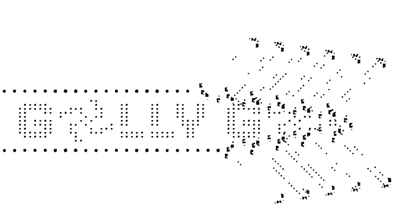
I alluded to the fact that Life is a universal computation, meaning that it can do pretty much anything. Here’s a pattern that spits out a ticker tape writing GOLLY over and over!
Life is wonderful.









February 4th, 2006 at 8:37 am
Note that the GoLly patterns
come with blurbs. Press ‘i’ to bring comments up after a pattern is loaded.
As an example, here’s my comment (24 Jun 2004
)on Hashing-Examples/totalperiodic
***
Without the block, this is Gosper’s “total aperiodic” pattern (Nov ’97), in which every cell in the universe eventually becomes aperiodic.
With the block, every cell eventually becomes periodic, but incredibly slowly. The block remains untouched for very roughly 3^63 generations. It deletes the nth glider (and is shifted) at about generation 3^(57.5+5.5n).
***
Also Check out that Miscellaneous/fermat-primes !
Also blockish-and-blockic-seeds. Motivation for these is under “slow salvo” in the excellent Life lexicon under Help.
February 17th, 2006 at 2:24 am
Hi Rudy,
I’m one of the “young guys” working on Golly (I’ve just turned 50 actually).
Nice to see that folks like you and Bill Gosper are using Golly — my
motivation index just shot through the roof. 🙂
Regards, Andrew
February 27th, 2007 at 3:12 pm
Hi, Rudy!
I went to Classical High School with Julian (“When Julian runs, he lopes more or less”). Please pass along my email address to him, as I live in the Bay area and would like to get in touch. Actually, I also was at Swarthmore for a couple of years (class of ’67).
Cheers!
Julie
February 10th, 2008 at 2:03 am
I don’t know when Gosper was born. Do you tell me please?
I want to publish his biography.
February 10th, 2008 at 5:02 pm
1943, though I don’t know the day. Check the short Wikipedia article about him.
http://en.wikipedia.org/wiki/Bill_Gosper
If you want to write about him, you should talk to him directly.